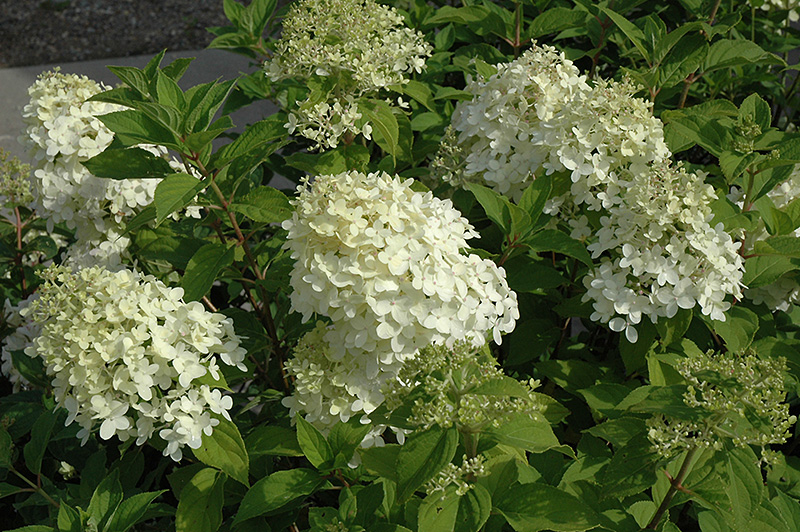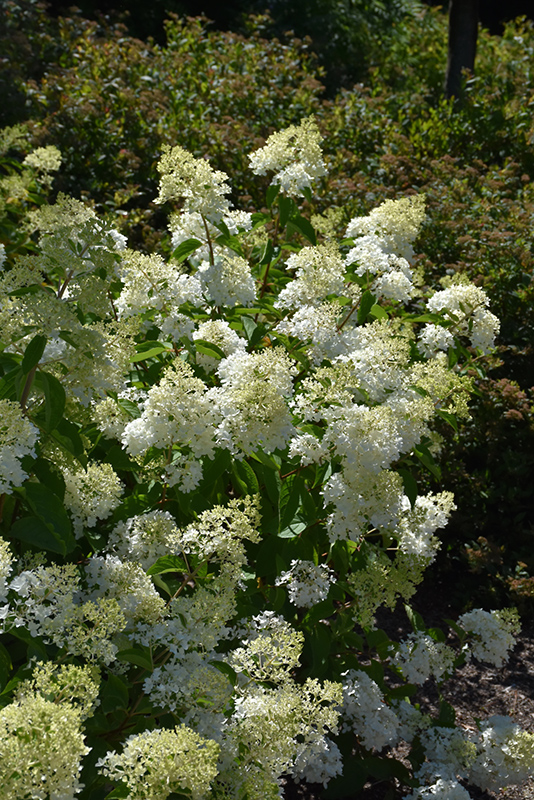Little Lamb Hydrangea
Hydrangea paniculata 'Little Lamb'
Height: 6 feet
Spread: 5 feet
Sunlight:
![]()
![]()
![]()
Hardiness Zone: 3a
Description:
A more compact version of the panicle hydrangea with correspondingly smaller flower clusters for a slightly less coarse look; pure white flowers are held at the ends of the branches over a long period and have an overall elegant appearance
Ornamental Features
Little Lamb Hydrangea features bold conical white flowers at the ends of the branches from mid summer to late fall. The flowers are excellent for cutting. It has green deciduous foliage. The pointy leaves do not develop any appreciable fall color.
Landscape Attributes
Little Lamb Hydrangea is a multi-stemmed deciduous shrub with a more or less rounded form. Its average texture blends into the landscape, but can be balanced by one or two finer or coarser trees or shrubs for an effective composition.
This shrub will require occasional maintenance and upkeep, and is best pruned in late winter once the threat of extreme cold has passed. It has no significant negative characteristics.
Little Lamb Hydrangea is recommended for the following landscape applications;
- Accent
- Mass Planting
- General Garden Use
Planting & Growing
Little Lamb Hydrangea will grow to be about 6 feet tall at maturity, with a spread of 5 feet. It tends to fill out right to the ground and therefore doesn't necessarily require facer plants in front, and is suitable for planting under power lines. It grows at a medium rate, and under ideal conditions can be expected to live for 40 years or more.
This shrub performs well in both full sun and full shade. It prefers to grow in average to moist conditions, and shouldn't be allowed to dry out. It is not particular as to soil type or pH. It is highly tolerant of urban pollution and will even thrive in inner city environments. Consider applying a thick mulch around the root zone in winter to protect it in exposed locations or colder microclimates. This is a selected variety of a species not originally from North America.
A NetPS Plant Finder tool



